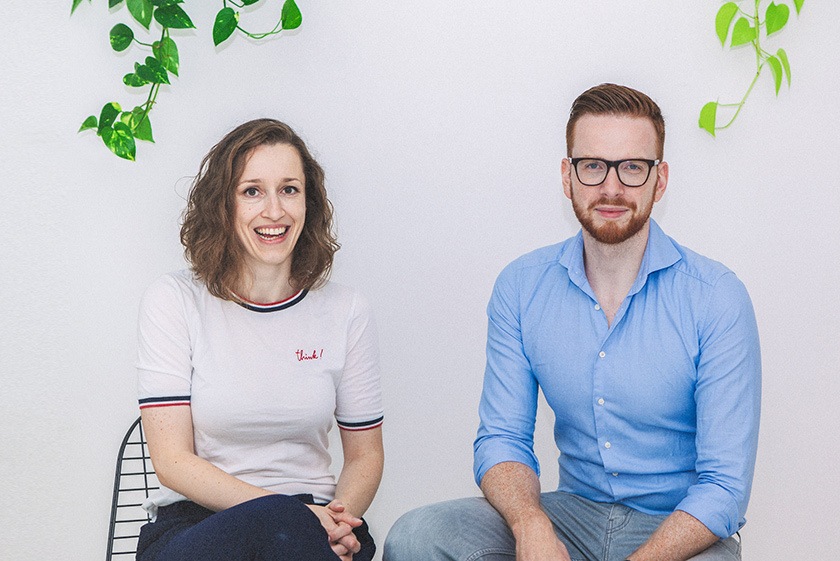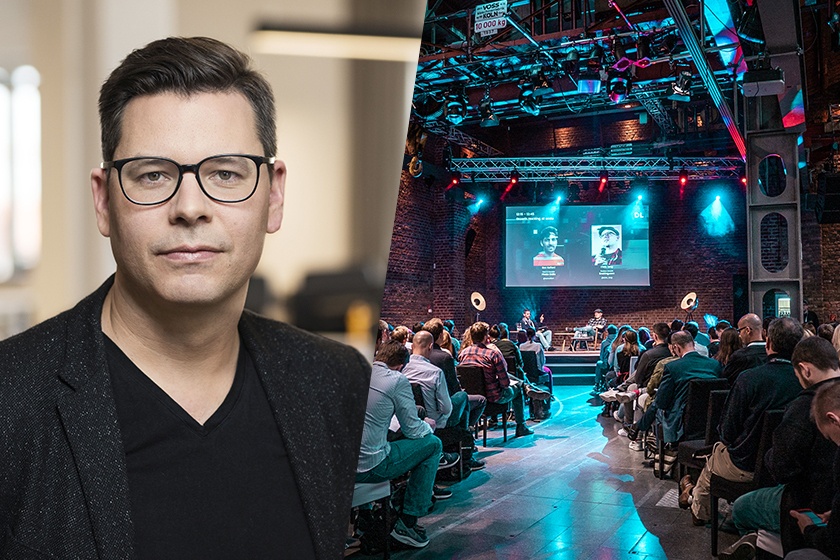Remote-Ready: Josh Johnson from Dribbble on how to lead a remote team
20. September 2019
In this article series, we feature successful remote-ready companies and ask them how they collaborate effectively in a remote environment.
Founded in July 2009, Dribbble has grown into a global community where tens of millions of people get inspired and connect with designers around the world. As of September 2019, more than seven million “Shots”, snapshots of designers’ work, have been shared, making Dribbble one of the most prolific and engaged design communities. As a designer-first, fully remote company, Dribbble focuses on creating features and tools that propel designers and their work to the next level. We spoke with Senior Product Manager Josh Johnson about Dribbble’s approach to remote work.
- Here is what you will learn in this interview
- that sharing screencasts is a simple way to keep people informed about engineering progress,
- why you should make use of status updates in your messaging platform,
- how joint video sessions speed up decision making.
How does your current organizational setup look like and in which units do you work remotely?
Dribbble is around 40 people and we all work 100% remotely with no central office.
How does your collaboration practice look like on a day-to-day basis?
We use a good mix of synchronous and asynchronous communication. As a product manager, I’m in a lot of Zoom calls and Slack channels, both with my team and with stakeholders. Additionally, we use Jira and Figma to manage the vast majority of work on a daily basis.
We have a lot of people in different timezones working on the same team, so wherever possible, we try to give those people the freedom to work on a schedule that works for them. This often means replacing a live interaction with something written, such as using a Slackbot for standups, or even something recorded; my engineers frequently record a screencast to share the progress they’ve made on a project before they sign off for the day. This is great because it gives me a look into where we are on a project but doesn’t require calendar juggling to find time for a review.
Do you have any key paradigms or must-haves for organizing your remote work collaboration?
Here are three practices that will go a long way towards building a solid, collaborative remote work culture:
- Utilize Slack statuses as much as possible. They help inform others when you’re in a meeting, working heads down for a while on something you need to focus on, or running to pick up your kids after school. We don’t require or want people to drop everything to answer every Slack notification, and away statuses help us communicate with each other that we won’t answer right away but will be back online later. When you see that others are comfortable not answering messages for a bit, you’re more comfortable doing the same.
- Jump into a video call right at the start of any misunderstanding, disagreement, or confusing conversation. Slack is great for a lot of things, but you can save hours of frustration by moving these situations immediately into a face-to-face conversation. What feels like a heated conversation in a Slack channel often turns into a friendly collaboration to tackle a mutual misunderstanding when you switch to a video call.
- If schedules allow, make it a habit to regularly block out an hour or two to work together on Zoom with one or more members of your team. I don’t mean you should plan a meeting with an agenda, I mean real work time where everyone is getting things done but the line of communication for asking questions and starting conversations is wide open. Asynchronous communication is fine for most of the daily grind, but when you have a big project and need to make a lot of decisions and progress in a short amount of time, leaving hundreds of Jira or Figma comments can be a huge time investment that draws simple conversations out over days. The product managers at Dribbble regularly get together for informal joint work sessions and we’ve felt so much closer as a team as a result.
Which are the most important tools for your remote collaboration?
Figma has been a huge game-changer for me as a product manager. I can wireframe out user flows, jump into some live, collaborative design time with a designer, and leave comments on comps that were submitted earlier, all in one tool. It speeds up the design cycle so much when you can use one tool instead of three.
How do you reflect the remote work specifics in your approach to leadership, coaching and mentoring?
Leading a remote team can be tricky. Not everyone is as comfortable opening up in a call or DM as they would be in person. You have to lead by example and create an environment of openness, honesty, and direct communication. This is especially tricky in group calls, where jumping in to share a thought in an active conversation can be difficult for some. Non-verbal cues and body language don’t always translate well when you’re dealing with a grid of faces on a computer screen. As a leader, you have to make sure everyone has space to speak their mind, which is often as simple as noting who hasn’t spoken up yet and directly asking them what they think.
Which key skills are important to work effectively in your remote work organization?
In a remote organization, you have to consciously put more effort into collaboration, keeping people informed, and even general workplace socialization. You don’t run into your coworkers in the halls or at the staff espresso machine.
It’s easy to get into the habit of staying in your little silo.
We’re most effective when we go the extra mile to share what we’re working on with others to get their input and help in making sure it’s a success.
Which tips can you share to have fun working remotely?
Our team is amazing at making people feel connected and ensuring we have light, fun interactions that break up the workweek. My favorite thing we do is movie club: once per month we pick a movie to watch, then we come together and talk about it in a Zoom call and play movie trivia games. It’s a blast!
We also do monthly “coffee break” hangouts where we all take a break and chat, and we even take 10-15 minutes after our full team weekly meeting for people to simply share what’s going on in their lives, what they did over the weekend, funny stories about their kids or pets, etc. I’ve worked in remote-friendly companies my entire career and Dribbble is definitely the best, most supportive remote culture I’ve found!



